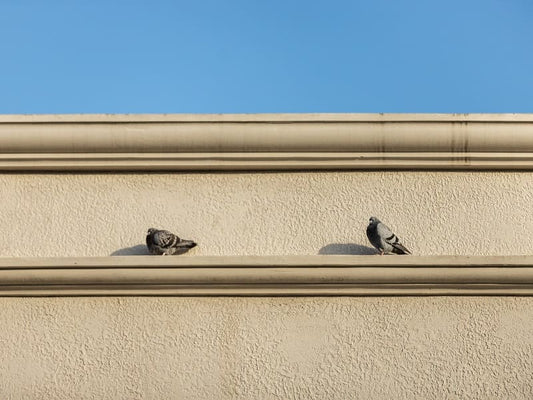
What Size Gutters Do I A Comprehensive Guide
What Size Gutters Do I A Comprehensive Guide
The last thing you want to see when you install gutters is water gushing over the top during a thunderstorm. Undersized gutters might cause this. What Size Gutters Do? What size gutters should I use? Guttering that is too big? They may be unsightly and accumulate a lot of trash. As a result, knowing what gutter size is appropriate for your property is critical.
Why Is Gutter Size Important?
Gutters collect and guide rainfall away from the foundation of your property, preventing water damage. However, they only perform successfully if they are correctly proportioned.
Undersized gutters commonly clog and overflow, causing damage to your roof, fascia, landscaping, and home's foundation. Oversized gutters do not overflow, but they are substantially more expensive and might detract from the exterior appearance of your property.
Five-inch gutters are the most popular since they are ideal for mid-sized homes. Choose 6-inch gutters if you have a larger home or live in a location with a lot of heavy rainfall. Gutters of 7 or 8 inches are also available but are typically utilized on commercial structures (more on this later).
A 5-inch K-style gutter can hold 1.2 gallons of water while overflowing in one foot, whereas a 6-inch gutter is capable of holding 2 gallons. Half-round gutters contain less water than circular gutters.
So, understanding how much water will flow from your roof in the hardest rainstorms is the key to establishing what size gutters you need.
What Is The Average Gutter Size?
You probably don't give your gutters much thought. That's especially true if they're properly engineered and perform a good job of transferring water from your roof to the ground. However, understanding standard gutter size is useful if it's necessary to replace your gutters. Learn more about gutter measurements so you can make an informed decision.
If there is a standard gutter dimension, seamless gutters are 5 inches long. That is what many residential homes offer, but you may also choose other typical options. These can include 4-inch, 6-inch, or 7-inch gutters in some circumstances.
How To Determine Gutter Size?
If you currently have a perfectly fitted gutter and want to substitute it with the same type, you may measure it and choose a gutter system that is identical in size.
When shopping for a new gutter system, it's vital to understand both the amount of water that will fall off your roof and the velocity at which it will flow. It isn't all that tough. You only need to determine the pitch of the roof, the maximum rainfall intensity in your location, and the size of the roof.
You'll multiply those figures to get the "adjusted square footage" of your roof. That single value will then be used to establish the required gutter measurements.
Here are the steps for calculating adjusted square footage:
Step 1: Determine The Size Of The Roof
- To find the total square footage of a gable roof, multiply the length and width of two slopes
- Multiply the length and width of your roof's flat areas for hip, intersecting, and mansard roofs. Add these figures together to get the total square footage
Step 2: Calculate The Roof Pitch Factor
The degree of slope of your roof is referred to as its pitch. It indicates how much your roof increases for every 12 inches. The roof pitch is 4:12 if the angle of the roof rises 4 inches for every foot.
To estimate the roof pitch factor, the roof pitch must be calculated. The steps for calculating roof pitch are as follows:
- A stable ladder, a 2-foot level, and a piece of tape measure are required
- Measure and mark the level 12 inches from the end
- Maintain a flat level with one end contacting the roof surface
- Measure the distance between the bottom of the level and the roof surface starting at the 12-inch mark. The measurement result you obtain is known as an increase. For example, if the distance between the bottom of the level and the roof surface is 4 inches, your roof will rise – or pitch – 4 inches each foot.
Step 3: Determine The Maximum Intensity Of Rainfall
- The National Weather Service records the greatest rainfall intensity in several regions. It is the greatest amount of rain (in inches) that might fall within a 5-minute sampling period. That's the figure you're looking for in this computation
- If your area receives a lot of rain, experts recommend going with bigger gutters since they can withstand the volume and intensity of the water much better
Step 4: Determine The Adjusted Square Footage
- Now multiply your roof's raw area by the roof pitch factor by the greatest rainfall intensity
- Assume you reside in Fairbanks, Alaska, where the greatest rainfall intensity is 2.1 inches per hour. If your property has a roof size of 1,500 square feet and a roof pitch of 7:12, the roof pitch factor is 1.1.
- So multiply 1,500 by 1.1 times 2.1
- 1,5001.12.1 (drainage area x roof pitch x the greatest rainfall intensity) = 3,465 corrected square feet
Step 5: Determine The Guttering Materials
The material of your gutters may also influence best gutter size for house. Thicker materials, in general, will last longer, ensuring that your gutter system is useful for years to come. Aluminium and Steel are considered the best options.
Step 6: Select The Correct Gutter Size
K-style gutters and half-round gutters are the most common styles of gutters in the United States.
Gutters In The K-Style
K-style gutters are inexpensive, long-lasting, and simple to install. They are also rather deep so that they can contain a lot of water, and their design complements modern roofing nicely. The edges of K-style gutters match the letter 'K,' thus the name.
- Choose 5-inch K-style gutters if your roof area is less than 5,520 adjusted square feet
- If your roof size is between 5,530 and 8,000 corrected square feet, go for 6-inch gutters
Half-Round Gutters
Half-round gutters resemble spherical pipes that have been sliced in half. Many people prefer them over K-style gutters because they are more visually pleasing and easier to clean. However, they are not as deep as K-style gutters and store less water; therefore, bigger ones may be required in a conventional house.
- If your roof area is less than 2,500 adjusted square feet, choose 5-inch half-round gutters.
- Choose 6-inch gutters if your roof size is between 2,500 and 3,850 adjusted square feet.
Step 7: Determine The Downspout Dimensions
The size of the downspout required is also determined by the size of your roof and the amount of rainfall that has to be channeled. Downspout sizes typically range from 2" x 3" to 4" x 5". However, you may have custom gutter downspouts made to match the demands of your property.
Step 8: Consultation With a Professional
It might be difficult to determine what gutter sizes your property requires on your own. As a result, talking with a professional may assist in guaranteeing you obtain the ideal gutter system for your house.
Experts will go above and beyond to look after you and your gutter system. They may also propose other sizes, materials, and solutions based on your requirements.
When Should You Consider 7- or 8-Inch Gutters?
It is uncommon for a property to require 7- or 8-inch gutters. Water running down a tile roof might shoot out over the top of gutters if the tile is situated high above the roof-line. Larger (wider) gutters may be a preferable alternative in this scenario.
If your roof is too large (more than 8,000 adjusted square feet), choose 7- or 8-inch gutters to keep water from spilling.
It should be noted that seven- or eight-inch gutters are pricey and not always easily accessible. You may need to arrange a special order with a professional installation.
Conclusion
Gutters are important in directing rainwater away from your home's foundation, avoiding damage from water. Measure your roof and get the proper gutter size for the best performance. Remember downspouts, which are required to direct water to the drainage system. DIY gutter installation is difficult, especially if you're doing it for the first time.
FAQs
What Is The Most Common Gutter Size?
The majority of homeowners choose 5-inch seamless gutters. Larger roofs may need 6-inch gutters.
What Is The Maximum Amount Of Water That Gutters Can Handle?
A 5-inch K-style gutter can hold 1.2 gallons of water per foot, whereas a 6-inch gutter can handle 2 gallons. Half-round gutters contain less water than circular gutters.
Are Gutter Guards Required?
Gutter guards prevent trash and vermin from nesting in your gutter system, decreasing the need for gutter cleaning.







